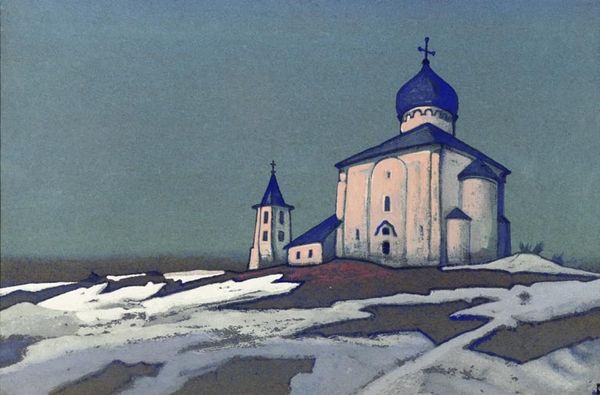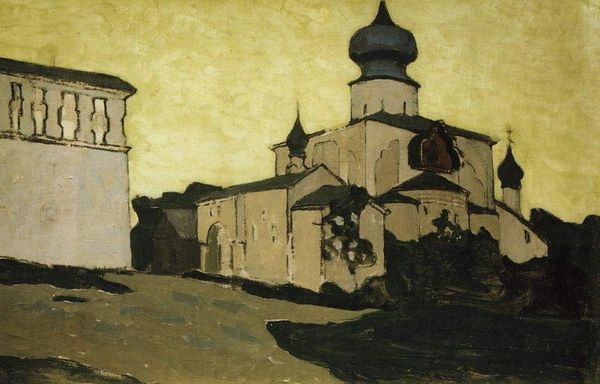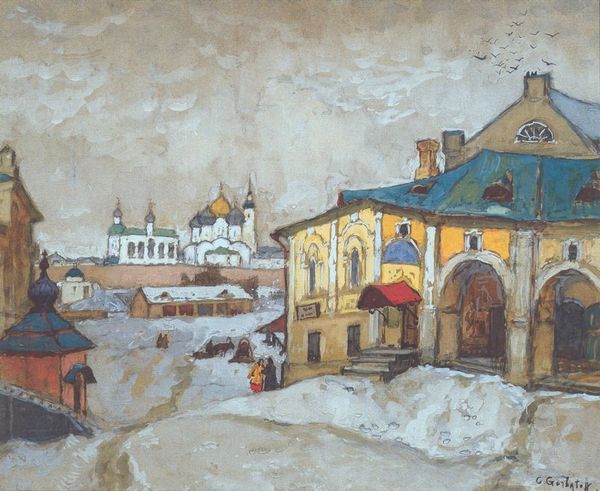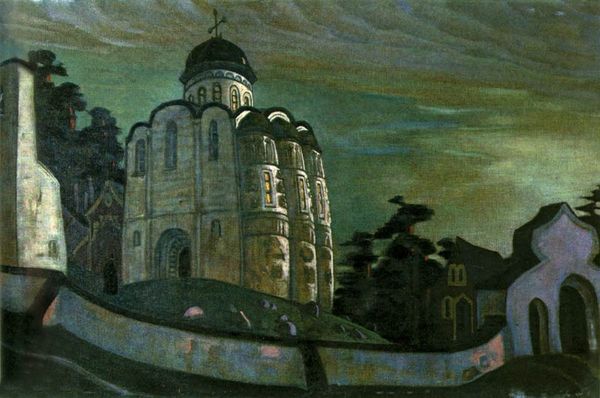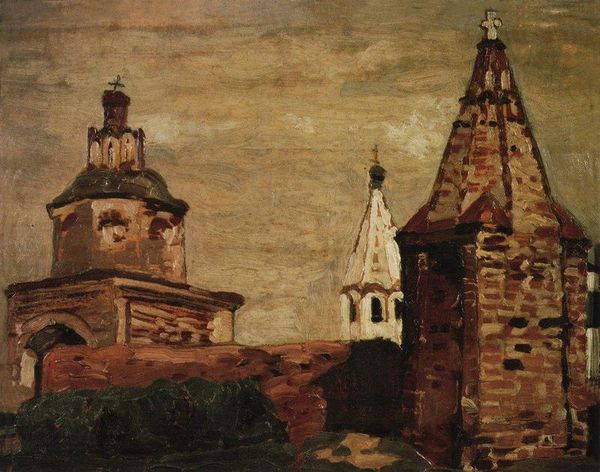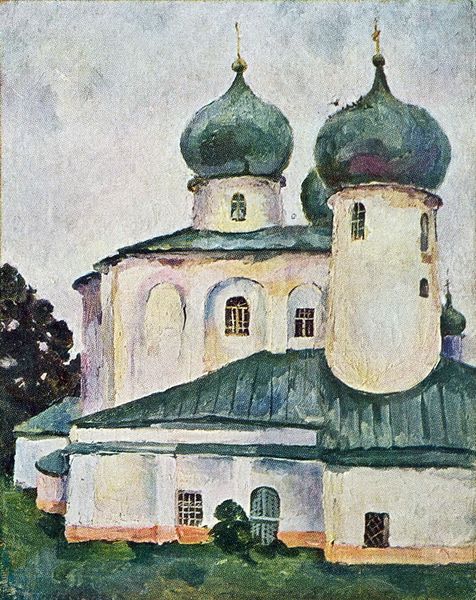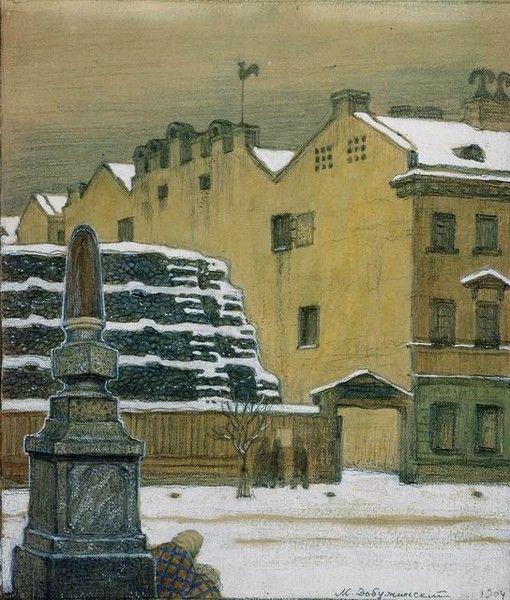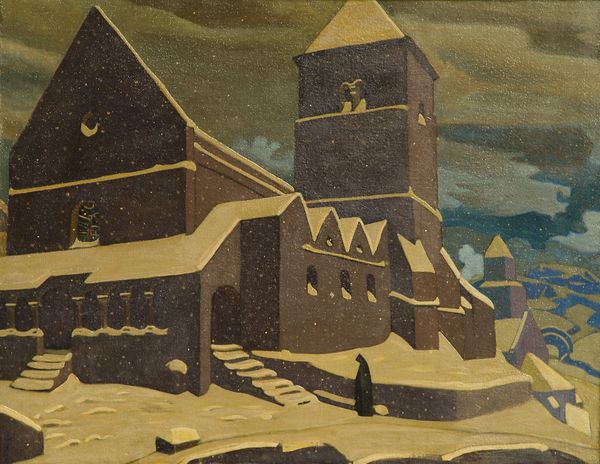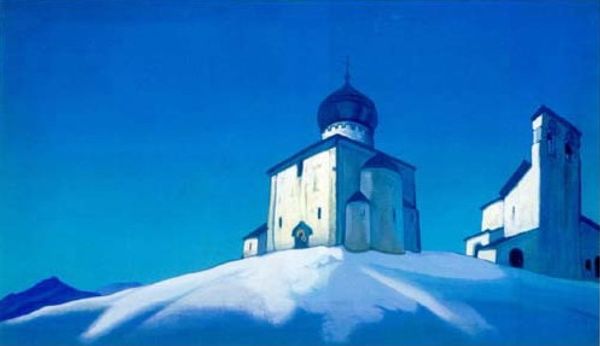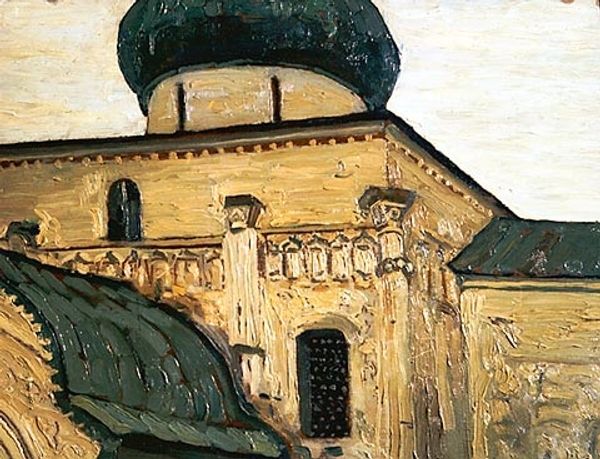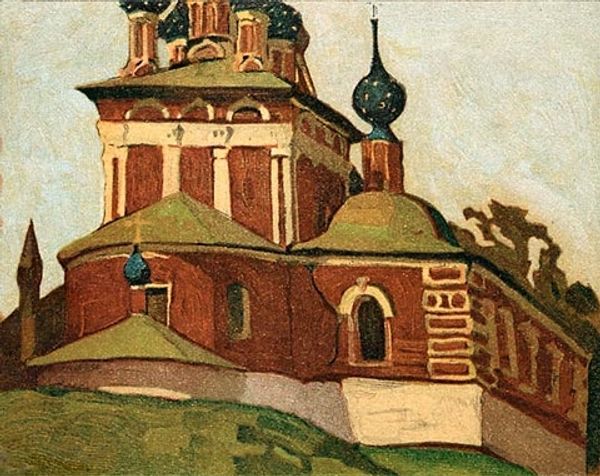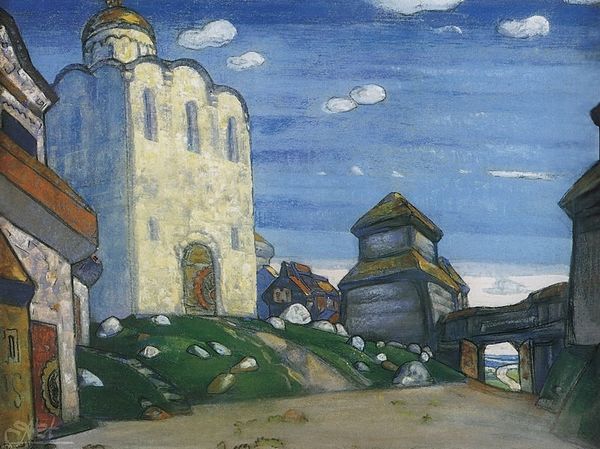
tempera, painting, oil-paint, architecture
#
tempera
#
painting
#
oil-paint
#
landscape
#
oil painting
#
symbolism
#
russian-avant-garde
#
architecture
Copyright: Public domain
Editor: So, this is "Novgorod. Spas Nereditsky." painted by Nicholas Roerich in 1899. It seems to be a tempera and oil painting of a Russian Orthodox church during winter. The painting evokes a feeling of solitude and resilience, doesn't it? What do you see in this piece from a historical perspective? Curator: Indeed. This work is fascinating when viewed through the lens of Russian cultural identity at the turn of the century. Roerich, heavily involved with the Russian avant-garde, used symbolism to represent national heritage. This depiction of the Spas Nereditsky church is not just a landscape, but a statement about the enduring spirit of Russia embodied in its ancient architecture. Editor: That's interesting. I hadn't thought about the building as a representation of Russia itself. How does its placement in the landscape affect this interpretation? Curator: Notice how the church, while aged, dominates the snowy, seemingly barren landscape. This mirrors a common narrative at the time: Russia's resilience amidst perceived decline and the call for a spiritual and cultural revival. The starkness might also hint at the societal changes and upheavals Russia was on the cusp of experiencing. Do you pick up on any echoes of the burgeoning nationalist sentiment? Editor: I see that now! The isolated setting really emphasizes its importance. I was so focused on the artistic style, I missed the social context almost completely. It's amazing how much history is packed into what I initially just saw as a pretty landscape painting. Curator: Exactly. Art often serves as a mirror reflecting the societal concerns and aspirations of its time. Studying Roerich allows one to understand how early 20th-century artists used imagery to reinforce or challenge dominant cultural narratives. It's about understanding the power of visual communication. Editor: Thank you! That's a valuable new perspective for me to remember. Curator: And it’s a powerful example of how art both reflects and shapes our understanding of history.
Comments
No comments
Be the first to comment and join the conversation on the ultimate creative platform.
